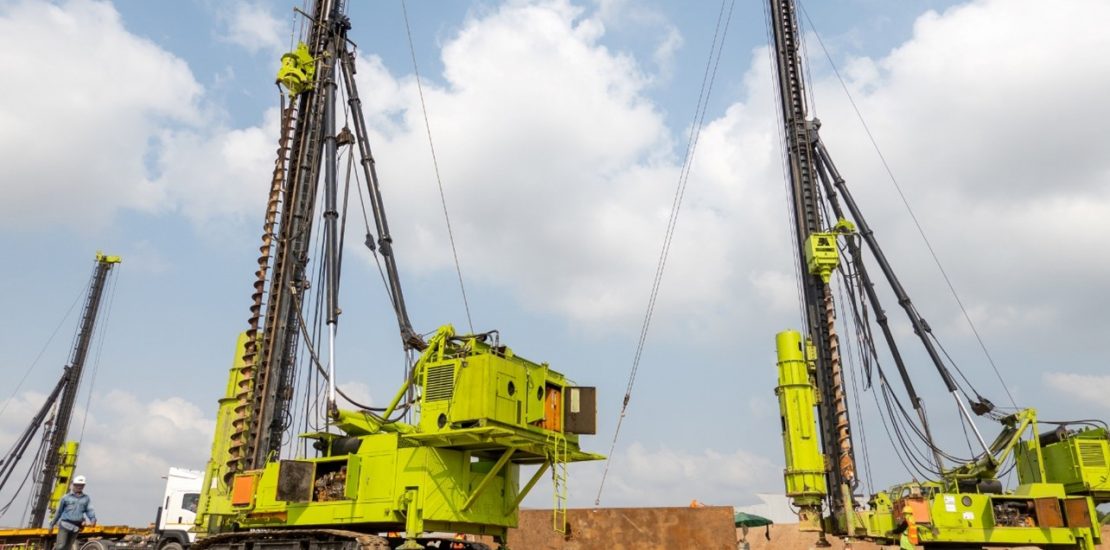Borehole Testing in Construction Sites
- November 4, 2023
- Posted by: Velosi Author
- Categories: Geotechnical, Insights

Borehole Testing is yet another crucial aspect of the construction sites in the geotechnical services region. It includes the drilling of in-depth holes into certain construction grounds to gather critical geological and geotechnical data. But, how do these tests provide specific information regarding the soil on which the construction projects are planned?
“The Borehole testing helps in assessing the load-bearing capacity of the soil. Moreover, identifying the potential hazards like sinkholes or contaminants and determining the versatility of the ground foundations. This geological testing helps the engineers figure out the main construction equipment, time, and cost at the same time.”
Various borehole testing techniques like soil sampling and in-situ testing help geologists investigate the soil’s importance for constructing heavy buildings with high stability and security.
What is the purpose of a borehole?
The main purpose of a borehole is to explore what is present in-depth in the ground’s core. Therefore, during such a process, geologists take the samples of the soil and date them back to discover its weight-bearing strength, sustainability, and other features. Moreover, groundwater levels and other relevant parameters are also explored with this factor.
This specific information is crucial for any construction site to design safe and stable foundations. This keeps the buildings safe and sound with proper alignment and deep bases which prevents them from all-natural disasters like earthquakes and hurricanes.
How deep is a borehole?
It generally depends on the surface quality and water levels beneath the ground. In agricultural places, a borehole can be 300 Feet long. However, for surfaces where there is no vegetation, the boreholes can be as long as 700-100 Feet. Normally, such holes do have a range of about 500 Feet depending on pipe casings and other soil maturity.
What are the methods of geotechnical Borehole testing?
- Soil Sampling: Extract soil samples for laboratory analysis to determine properties like texture, composition, and permeability. Common methods include Hand auger and rotary drilling.
- Standard Penetration Test (SPT): Measures soil resistance by driving a standard sampler into the ground and counting the blows required for penetration. Provides insights into soil density and strength.
- Cone Penetration Test (CPT): Utilizes a cone-shaped penetrometer to measure soil resistance as it’s pushed into the ground. Assess soil strength, friction, and pore pressure.
- Pressure meter Test: Measures soil compressibility and strength in situ by applying pressure to a probe in a borehole. Useful for assessing soil deformation properties.
- Plate Load Test: Determines the bearing capacity of soil by applying a load to a rigid plate at the surface and monitoring soil settlement.
- Permeability Testing: Evaluate a soil’s ability to transmit water through various methods, such as constant head, falling head, or double-ring tests.
- Vane Shear Test: Measures the undrained shear strength of soft cohesive soils using a vane attached to a rod that’s rotated in a borehole.

What are the components of a borehole?
- Drill Bit & Pipes: A tool at the bottom of the Borehole machine and it is used to cut through rocks and other items in the ground. Meanwhile, the pipes transport the drilling fluids to the Drill bit and keep it fresh for drilling actions.
- Drilling Fluid: It is a mixture of water, mud, and other materials that keeps the drilling at the bottom of the surface constant. It cools down the machine and keeps it functional as long as it is needed.
- Screen & Wall: This casing section in the water walls allows the proper water flow from one to the other ends while keeping the sediments out. Meanwhile, the wall allows the pipe to penetrate the ground and collect a suitable date from the soil.
- Steel Casing: The Steel pipe cases prevent the pipes from curving and stuck in the ground. Moreover, they prevent the water inflow backward as well.
List of geotechnical laboratory tests and Description
- Atterberg Limits: This test determines the plasticity and liquidity limits of soil for construction purposes.
- Proctor Test: It helps experts in determining soil moisture-absorbing strength and water usage density. This keeps the experts alarmed about the foundations to prevent the sliding of the soil beneath the construction sites.
- Hydrometer Analysis: It determines the soil grains and tests each bundle of sand grains regarding their load-bearing power in different weather conditions.
- Unconfined Compression Test: This specific test assesses the strength of cohesive soils by applying axial loads.
Conclusion
Borehole testing is imperative in the field of geotechnical engineering. It provides valuable insights into the subsurface conditions, enabling professionals to make informed decisions about construction and infrastructure. By evaluating the soil’s physical properties, engineers can design structures that are safe, durable, and efficient. Borehole testing also plays a vital role in environmental studies, which helps to identify potential groundwater contamination and assess the feasibility of groundwater extraction.
Leading innovative trends in borehole testing methods continue to evolve, offering more accurate and comprehensive data. A well-executed borehole test can mark the difference between project success and failure.
Please contact us for more information and assistance.



